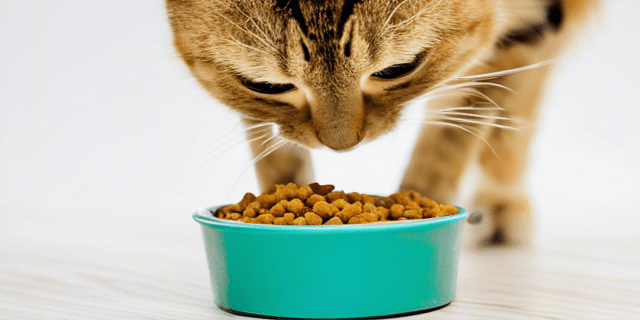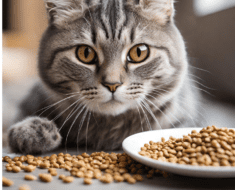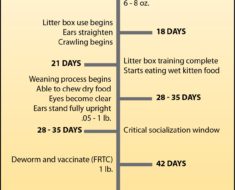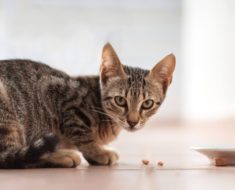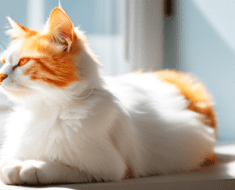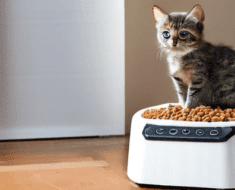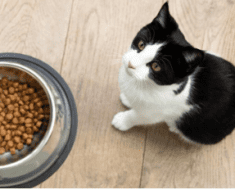Indoor cats should eat dry food because it helps with their dental health and prevents obesity. Dry food is an important part of a cat’s diet, especially for indoor cats.
Unlike wet food, dry food helps to keep a cat’s teeth clean by reducing tartar and plaque buildup. Regularly feeding your cat dry food can also help prevent obesity, as it typically has fewer calories compared to wet food. Additionally, dry food is convenient as it can be left out for cats to graze throughout the day, which is helpful for busy owners or for cats who prefer to eat in smaller portions.
However, it’s important to monitor your cat’s water intake and ensure they drink enough, as dry food does not provide as much hydration as wet food. By including dry food in your indoor cat’s diet, you can help promote their overall health and well-being.
Nutritional Needs Of Indoor Cats
Indoor cats have unique nutritional needs. While dry food can be a convenient option, it’s important to consider the overall diet. Supplementing with wet food can help meet their hydration needs and provide essential nutrients.
Understanding a cat’s dietary requirements is essential for their overall health and well-being. Indoor cats have different nutritional needs compared to outdoor cats due to their more sedentary lifestyle.
Dry food plays a crucial role in meeting the nutritional needs of indoor cats. It provides the necessary nutrients such as proteins, carbohydrates, and fats for their growth and energy.
However, it’s important to note that dry food alone may not be sufficient to meet all of their nutritional needs. Cats also require a balanced mix of wet food that provides hydration and additional essential nutrients.
To ensure your indoor cat receives a well-rounded diet, consult with your veterinarian to develop a feeding plan that includes a combination of high-quality dry and wet foods supplemented with occasional treats. This will help keep your feline companion healthy and satisfied.
Pros And Cons Of Dry Food For Indoor Cats
Dry food has both pros and cons when it comes to indoor cats. Let’s start with the pros:
- Dry food is convenient, as it can be left out for free feeding, which is important for busy cat owners.
- Dry food can be beneficial for dental health, as the crunchy texture helps reduce tartar and plaque buildup.
- It tends to be more affordable than wet food options.
- Dry food is often formulated with added nutrients and specific ingredients to support a cat’s overall health.
However, there are also cons to consider:
- Some cats may not drink enough water when consuming mainly dry food, which can lead to dehydration or urinary tract issues.
- Dry food typically has a lower moisture content, which may not be ideal for cats with kidney or urinary issues.
- It may be less palatable for some cats, especially those who are selective eaters or have dental problems.
- Higher carbohydrate content in dry food can contribute to weight gain and obesity.
In conclusion, while dry food offers convenience and dental benefits, it’s important to consider the specific needs of your indoor cat and provide a balanced diet that meets their nutritional requirements and promotes overall well-being.
Alternatives To Dry Food For Indoor Cats
Wet Food Options: Wet food provides essential hydration for indoor cats. Consider incorporating moisture-rich varieties for better overall health.
Raw Food Diet: Some owners opt for raw food diets for their indoor cats. Consult with a veterinarian before transitioning to this diet.
Health Implications Of Dry Food Consumption
Should Indoor Cats Eat Dry Food? Indoor cats primarily fed dry food may be at a higher risk for obesity. A diet mainly composed of dry food can lead to weight management issues. This can have a significant impact on a cat’s overall health. Additionally, urinary tract health can also be affected by a dry food diet. It’s important to consider the implications of a solely dry food diet on a cat’s well-being. Owners should carefully assess their cat’s diet and consult with a veterinarian to ensure their feline companion is receiving a balanced and nutritious diet.
Transitioning To A Different Diet
When introducing a new food, the process should be gradual to prevent digestive upset. Start by mixing small amounts of the new food with the old, gradually increasing the ratio over a 7-10 day period. Seeking veterinary advice before making any dietary changes for your indoor cats is essential to ensure they receive proper nutrition. Your veterinarian can provide guidance based on your cat’s individual needs and health status. Consideration should also be given to any underlying health conditions or dietary restrictions. Making a transition under the guidance of a professional can help minimize any potential issues and ensure a successful change in your cat’s diet.
Making Informed Choices As A Pet Owner
When it comes to indoor cats, the question arises: should they eat dry food? Learn more about the pros and cons of this dietary choice to ensure the well-being of your feline friend.
| Indoor cats benefit from a diet that includes high-quality dry food. |
| Dry food helps maintain dental health and prevents obesity. |
| Providing a mix of wet and dry food ensures hydration and nutritional balance. |
| Monitor your cat’s weight and adjust the food portions accordingly. |
Frequently Asked Questions Should Indoor Cats Eat Dry Food?
Should Indoor Cats Eat Dry Food?
Dry cat food can be a convenient and affordable option for indoor cats. It helps in keeping their teeth clean and ensures a balanced diet.
What Are The Benefits Of Feeding Indoor Cats Dry Food?
Dry cat food can help manage weight and provide essential nutrients. It’s easy to portion and store, making it a convenient option for indoor cats.
Is Dry Food The Only Option For Indoor Cats?
No, indoor cats can also benefit from wet food and a variety of treats. It’s important to provide a balanced diet and monitor their overall health.
How Much Dry Food Should An Indoor Cat Eat?
Portion control is key. Indoor cats typically require 1/4 to 1/2 cups of dry food per day, divided into two meals to maintain a healthy weight.
Should Indoor Cats Drink More Water If They Eat Dry Food?
Yes, it’s essential to encourage indoor cats to drink more water when consuming dry food to prevent dehydration and promote overall health.
Conclusion
After weighing the pros and cons, it’s clear that indoor cats can thrive on a diet of dry food. However, it’s important to monitor their health and ensure they stay hydrated. Consulting with a vet can provide personalized recommendations for your feline companion’s diet needs.
Prioritizing their well-being is key.
